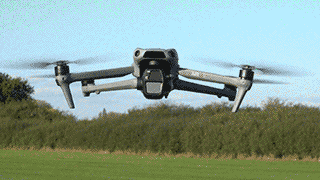
The DJI 3S is, as the name suggests, an update to the Air 3. This tier of DJI's range literally tips the scales into the serious market, the first above the 250g threshold and so capable of more solid handling in the air and – significantly – carrying more cameras.
Despite the minimal name change, this is not just any refresh – the drone gets a new bigger main camera sensor and even a new battery. DJI even say it can manage "more breathtaking details than the current DJI Mavic 3 Pro." It's enough to make you ask? "Why not call this drone the DJI Air 4?"
That's DJI's call though. It is true that, notable improvement though the arrival of a 1-inch main sensor is, this is a more settled step in the Air's history than previous generations. I noted in my review of the DJI Air 3 that it was DJI's least consistent product, veering from a very odd squat 'Mavic Air', though the 2nd generation which started with a 1/2-inch sensor then got a 1-inch sensor a year on at the 2S phase.
That 2S was an important a popular drone; and the 'S' brought with it the 1-inch sensor which is psychologically significant as well. This time, though, there is also a 1/1.3-inch 70mm EFL camera atop it so – unlike the 2S – not every shot is very wide angled.
Spice it up with some interesting improvements to DJI's software – not least the panorama tool – and we're off...
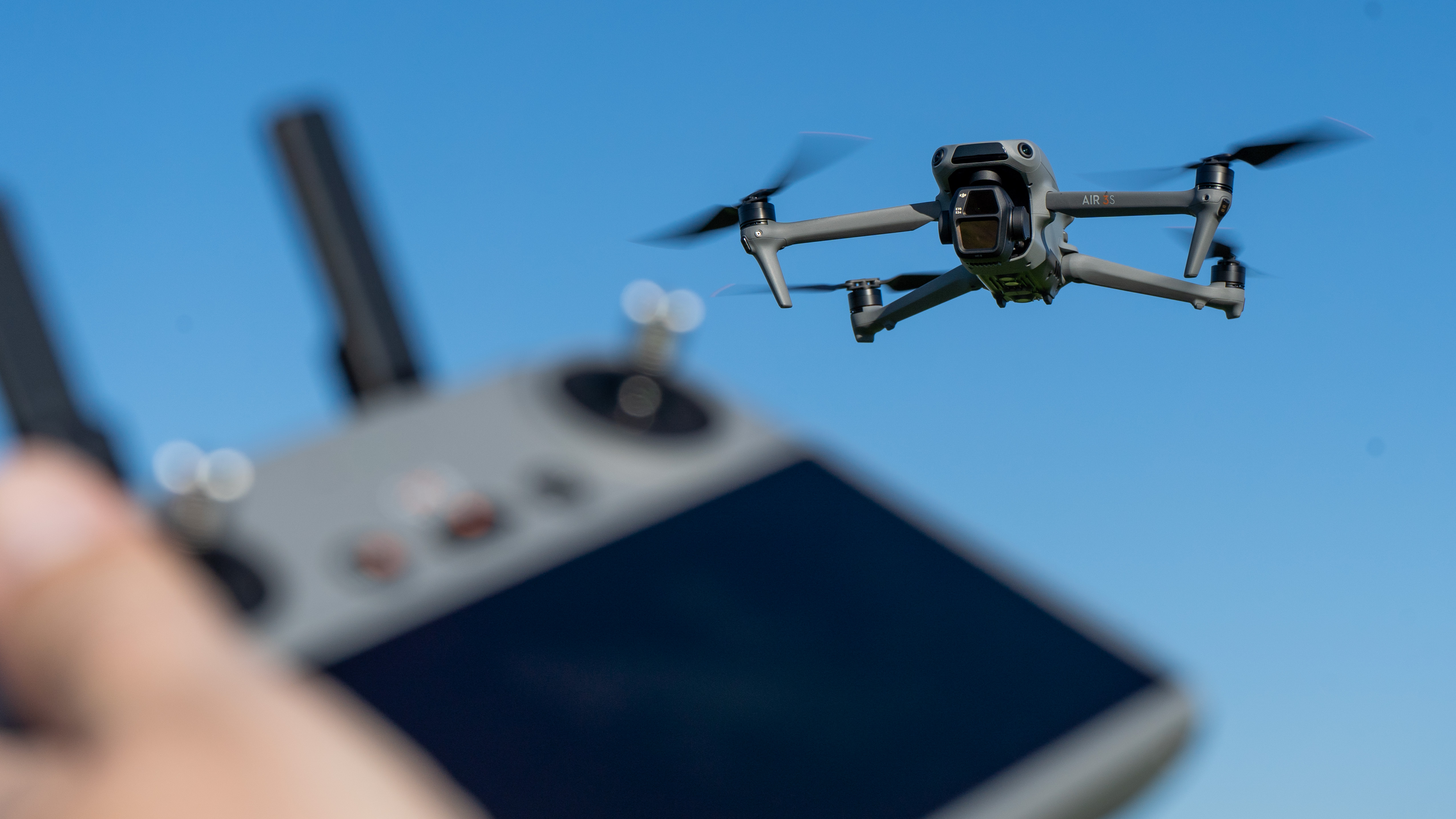
DJI Air 3S: Specifications
DJI Air 3S: Price
At launch, the DJI Air 3S is set at $1099 | £959 | AU$1699 with the RC-N3 (the now standard remote which requires your phone as a screen), rising to $1399 | £1239 | AU$2129 if you want the same controller in the "Fly More Combo". This adds a couple of extra batteries (for a total of three), a charging hub and bag.
Finally, the version I tested here is the combo with the RC 2 remote controller – which has a built-in screen – for $1599 | £1439 | AU$2429.
There isn't a lot of adjustment, except in line with currency changes, since the Air 3; the RC 2 Fly More Combo is actually less in the US than its predecessor, but more in the UK. The price of the drone reflects the fact this is the drone buyer's equivalent of a step into the interchangeable lens territory; like buying a mirrorless camera and a couple of lenses. There is a reason DJI call it 'advanced' and, to be honest, I had expected a slightly bigger jump up in costs.
DJI Air 3S: Design & Handling
The build is unmistakably DJI, with the reassuring robustness that only a drone of 724g (1.5 pounds) can convey. If you're familiar with DJI and especially the 'Mini' drones, this is a significant step up, weighing about the same as three of those. The result is something a bit denser, not afraid to use stronger materials – there is evidence of metal on the base of the fuselage, and you can feel the firmness in the arm hinges which all smacks of solidity.
Despite that, this is still a portable, folding drone which you can easily hold in your hand, and even land on your palm if you choose.
There is a MicroSD card slot at the back and a USB-C port through which the battery will charge – perhaps at the same time as downloading from the whopping 42GB of internal storage (though if your computer will deliver 100W of power for the fastest 60 minute charging of the battery to a USB socket then congratulations!) As a nice touch, the file transfer doesn't even need the drone to be powered up.
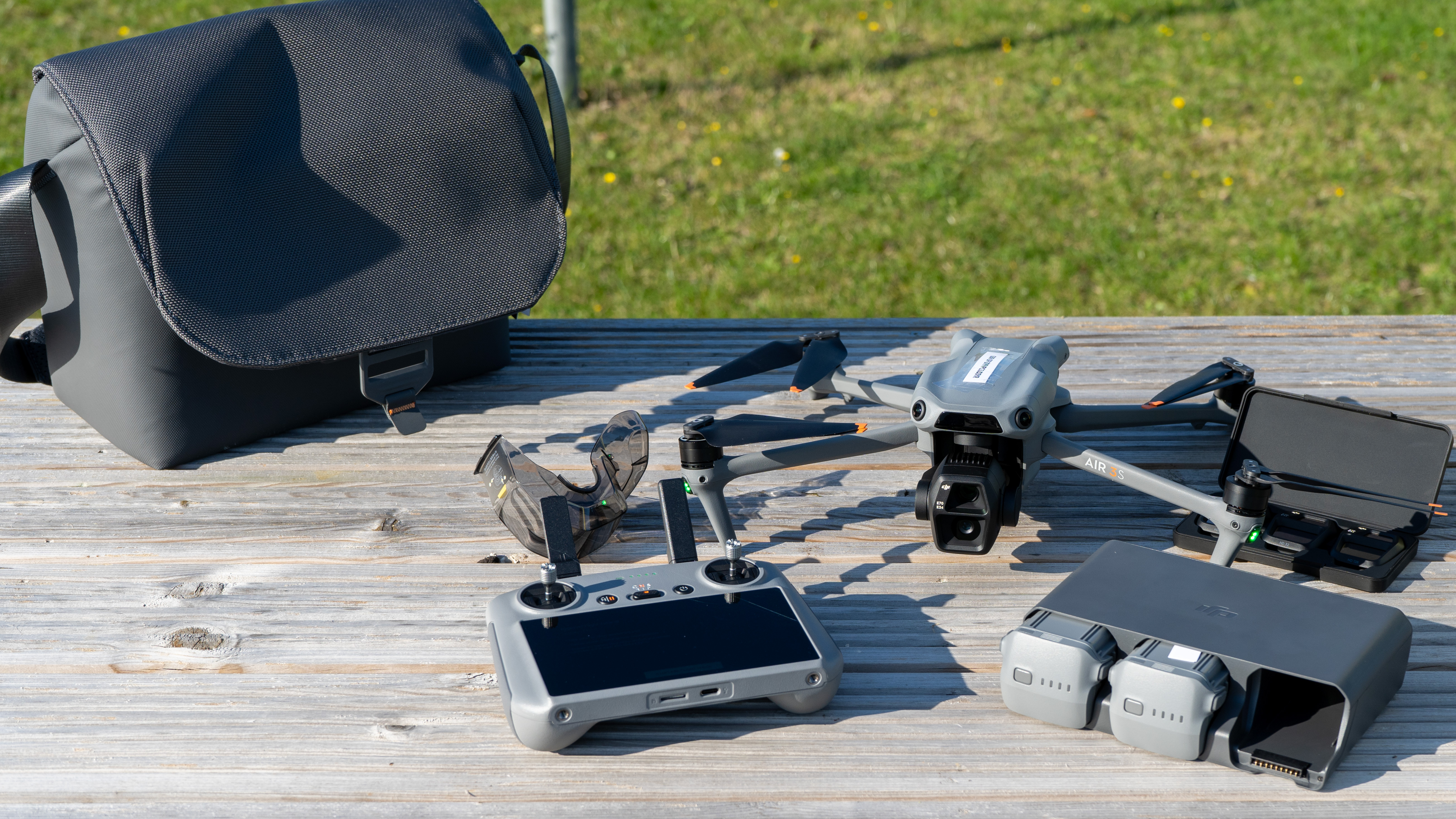
Speaking of battery management, DJI also offer – in the Fly More Combo – their charging hubs which will charge batteries in sequence from the power supplied, a fantastic convenience. As well as supporting PD fast charging, the hub also has 'power accumulation' – the ability to push all the charge from three low batteries into one for convenience.
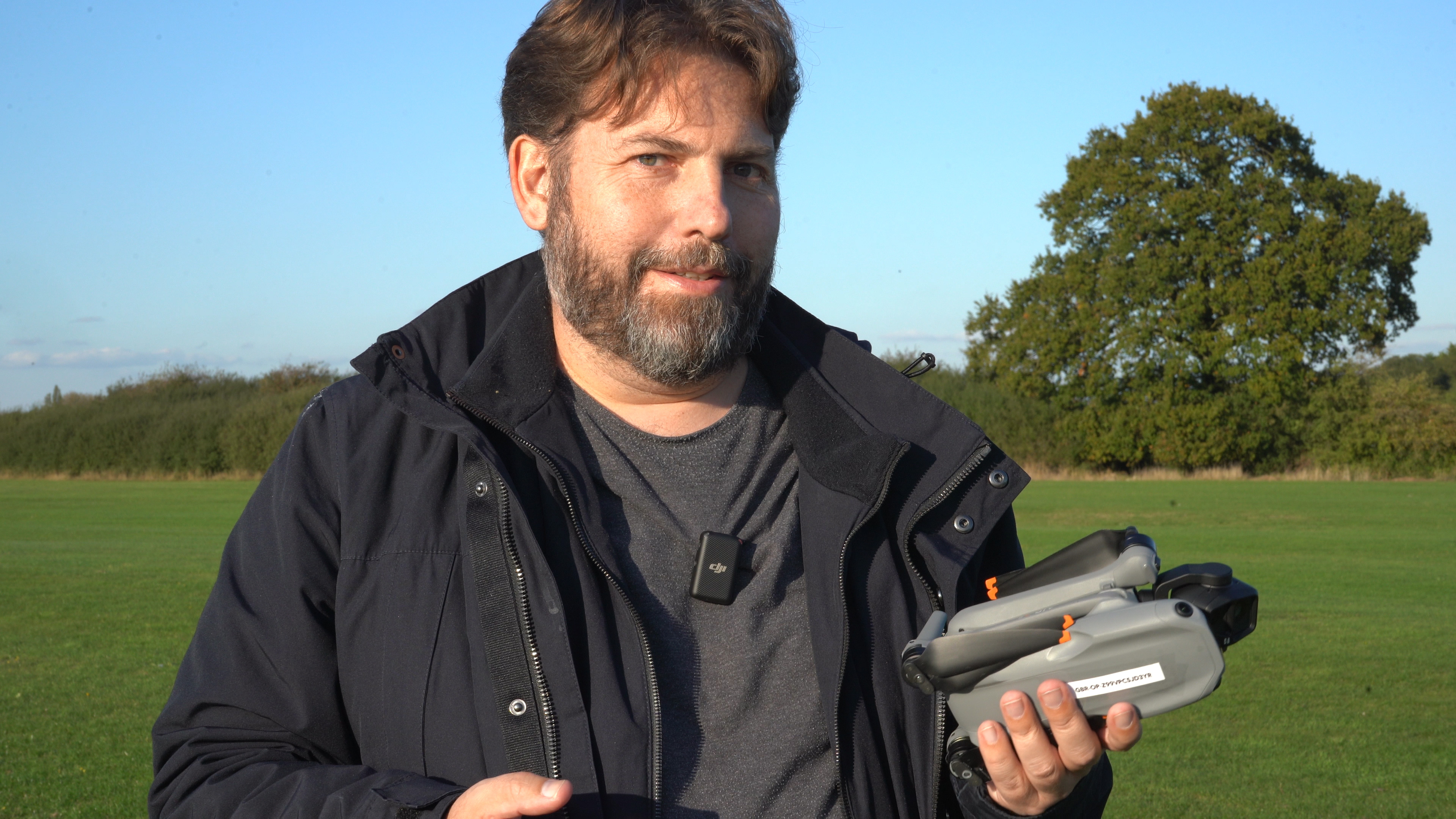
The shift to different image sensors in the different optics does raise a bit of a serious question for creators compared to the drone's predecessor. Something I found I liked about the Air 3 was the matching sensors – here the sizes are different, but both are capable of the same outputs so you don't find yourself needing to second-guess yourself (no "Will it do 4K 60fps with this lens?").
There is certainly no pinch-zoom through the range as you'll find on an iPhone, but then the Air 3 couldn't do that either. Otherwise, I honestly I didn't find it came up a lot, though you can see in the
DJI Air 3S: Performance
The 'main' sensor is actually not the one I am most inclined to use; I think the tele offers more interesting cinematic possibilities and (since it's a relative novelty compared to most drones) it's the camera that excites me the most.
Still, it is excellent compared to, say, the DJI Mini 4 Pro, and not a million miles away from the Mavic 3 Pro's Four Thirds Hasselblad camera. I was testing the drone at an airfield (don't worry, I had special permission) so I mostly had leaves and hedges to asses the sharpness of the camera on, but the JPEGs which came out of the camera (about 20Mb each).
What clearly comes across in the images is the quality of the low-light areas; you'd expect that from the 1-inch sensor, of course, but it's still impressive to push the Exposure slider up and down 5 stops in Camera Raw and keep finding detail at both ends rather than horrible blown out patches. This really is the low-light powerhouse claimed (and even on the 70mm EFL I found 4.5 stops of adjustment pretty comfortable in landscapes).
Flight is brilliant too. The drone was spectacularly fast and responsive, and you'll really appreciate the difference if you've been used to lighter aircraft. Admittedly I've got a few years flying under my not-inconsiderable belt, but I found I was able to use the 'Sport' mode without worrying about the drone anything like the amount I do with other new aircraft.
One thing I wasn't able to test to the full due to UK regs was the new LiDAR 'nightscape' collision sensing, but, in general the system (though not super keen about going near hedges) was confidence-inspiring enough that I could fly the drone toward myself at full speed knowing it would automatically divert rather than hit me. That's something you wouldn't have done a few years ago!
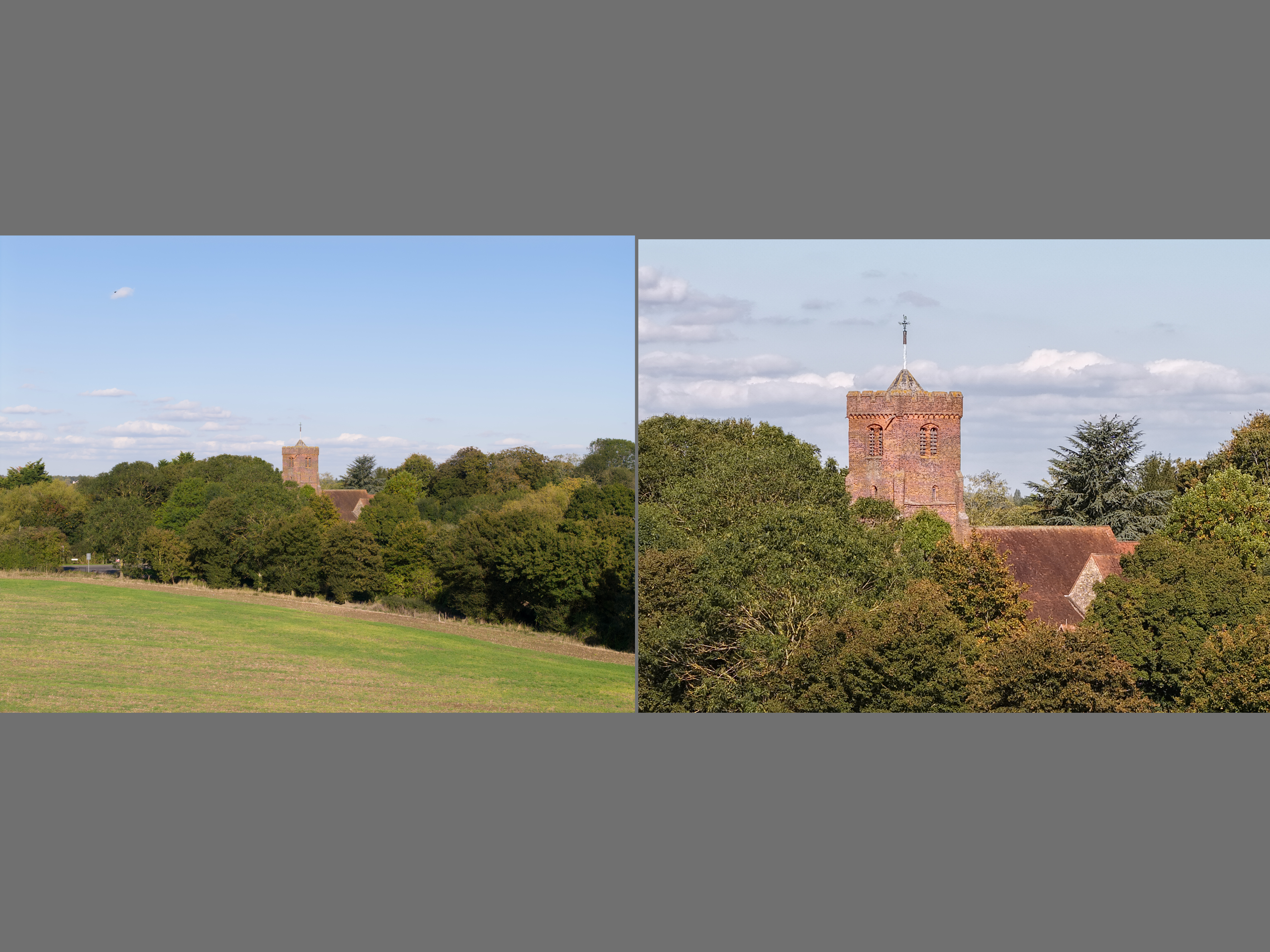
Are both cameras & lenses perfectly balanced straight out of the system with the first version of the software? I'm not 100% sure but there is very, very little in it – no more variance than you do find when using a phone with multiple cameras. I was prepared for this to be a problem cutting clips together, but it just wasn't.
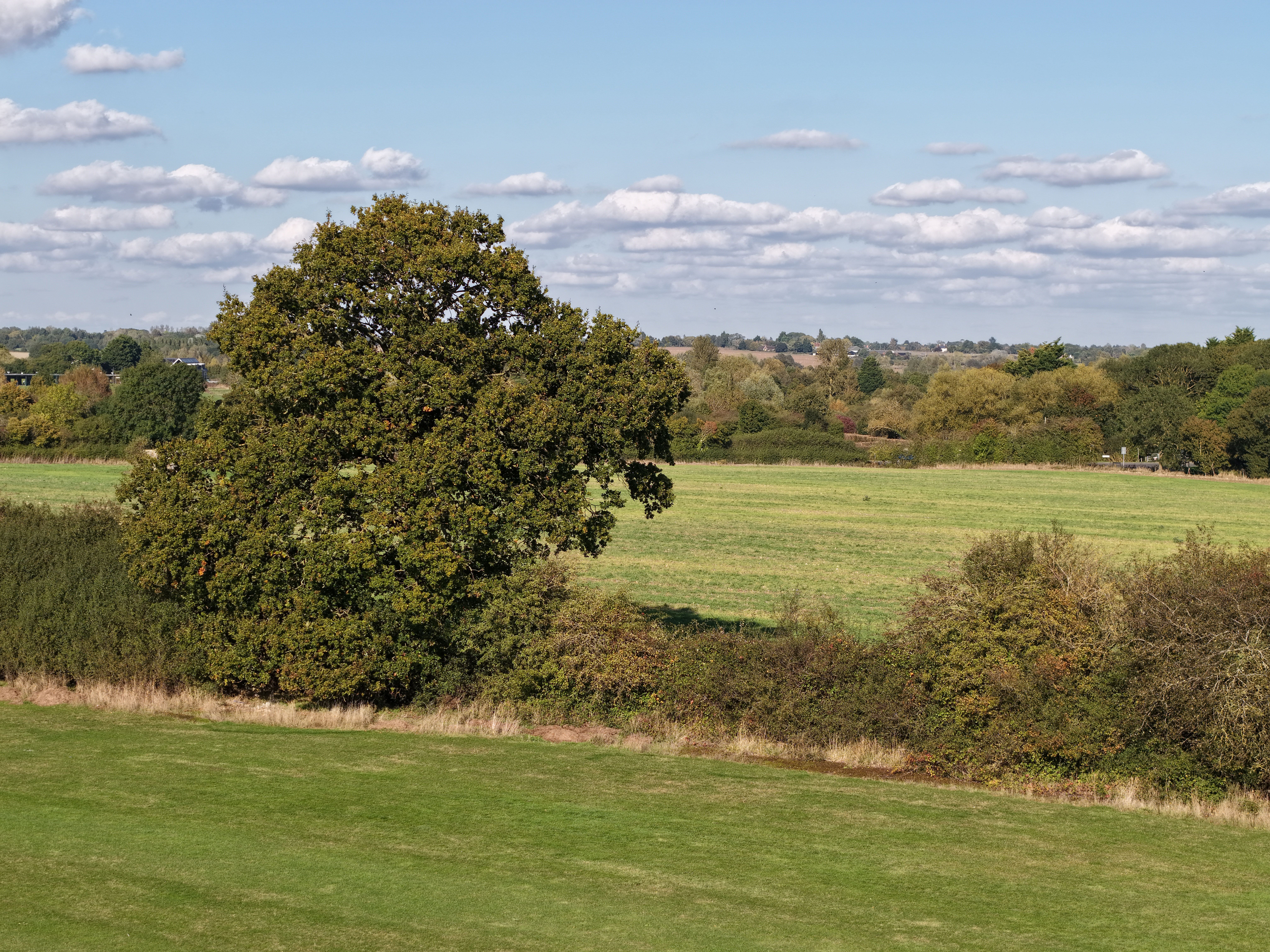
DJI Air 3S: Sample Images
Crispness is not an issue at all – the default JPEGs from either sensor are stuffed with detail if you're not using digital zoom and even if you are it's pretty impressive up to a point – especially in motion, but we'll get to that!
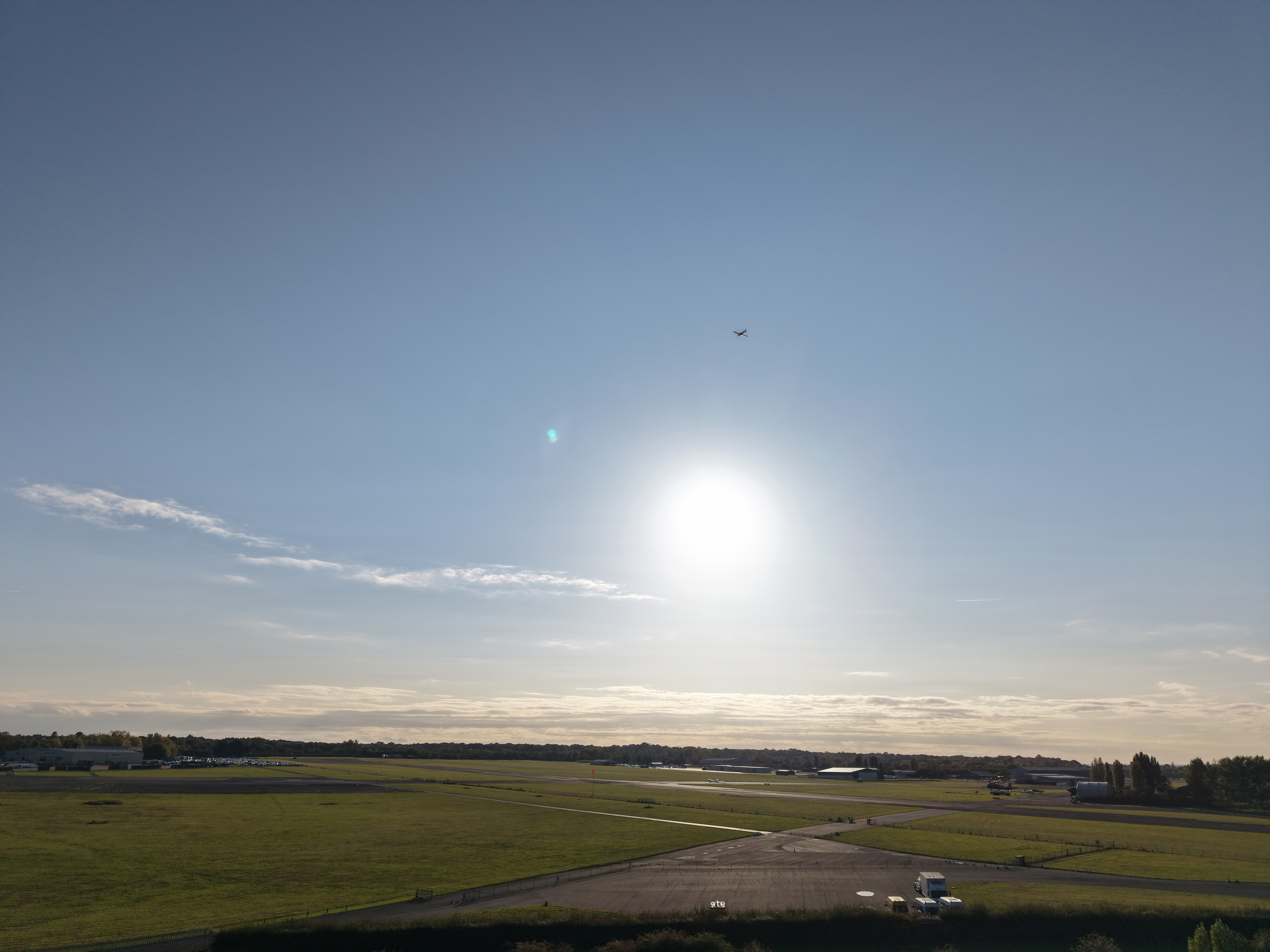
As well as a tiny bit of flare from the sun in the tricky test above, you still see a very sharp aircraft and detail in the buildings isn't difficult to perceive. Unlike other drones I didn't feel. I needed to resort to the bracketing to ensure I recorded detail.
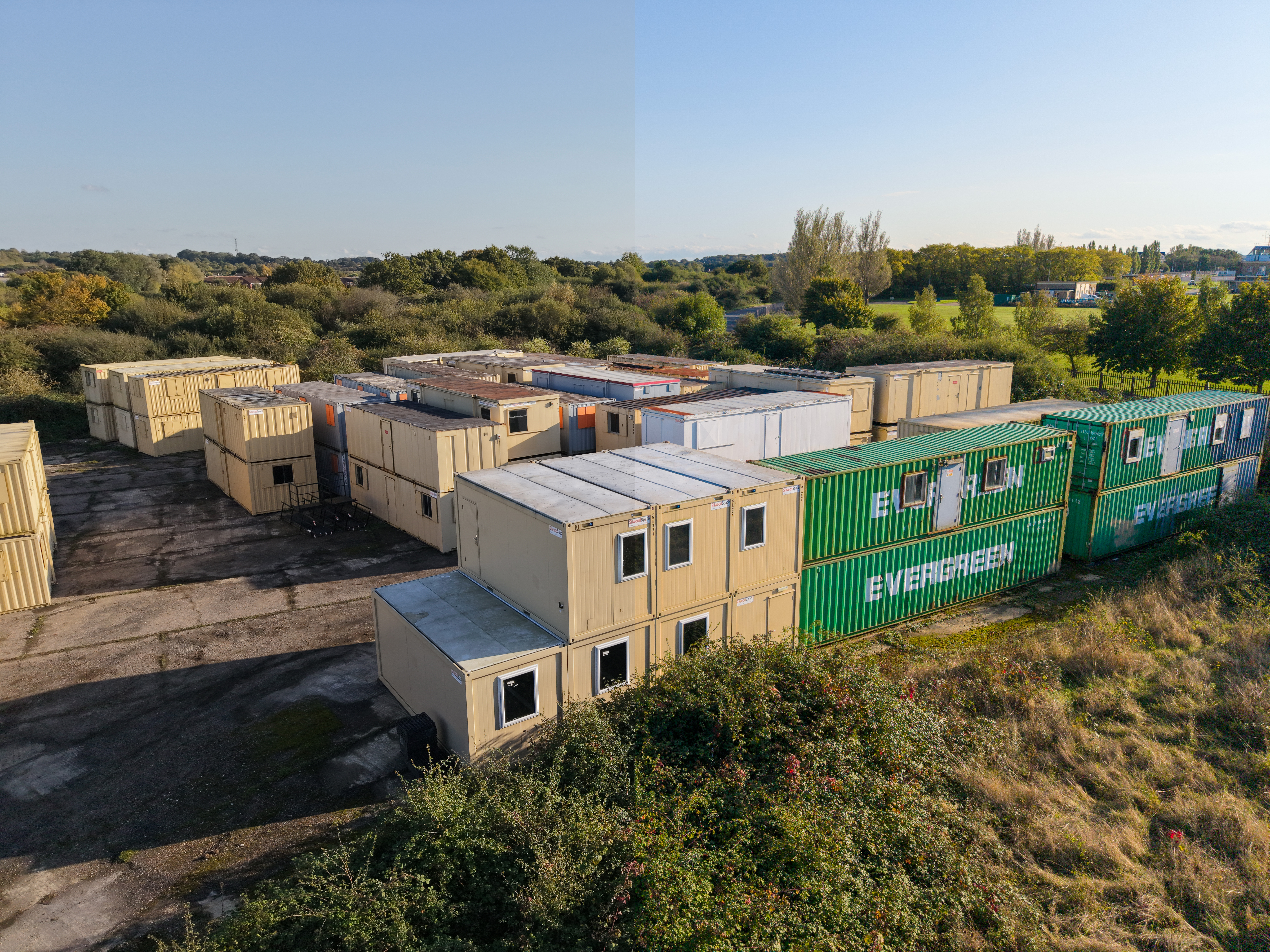
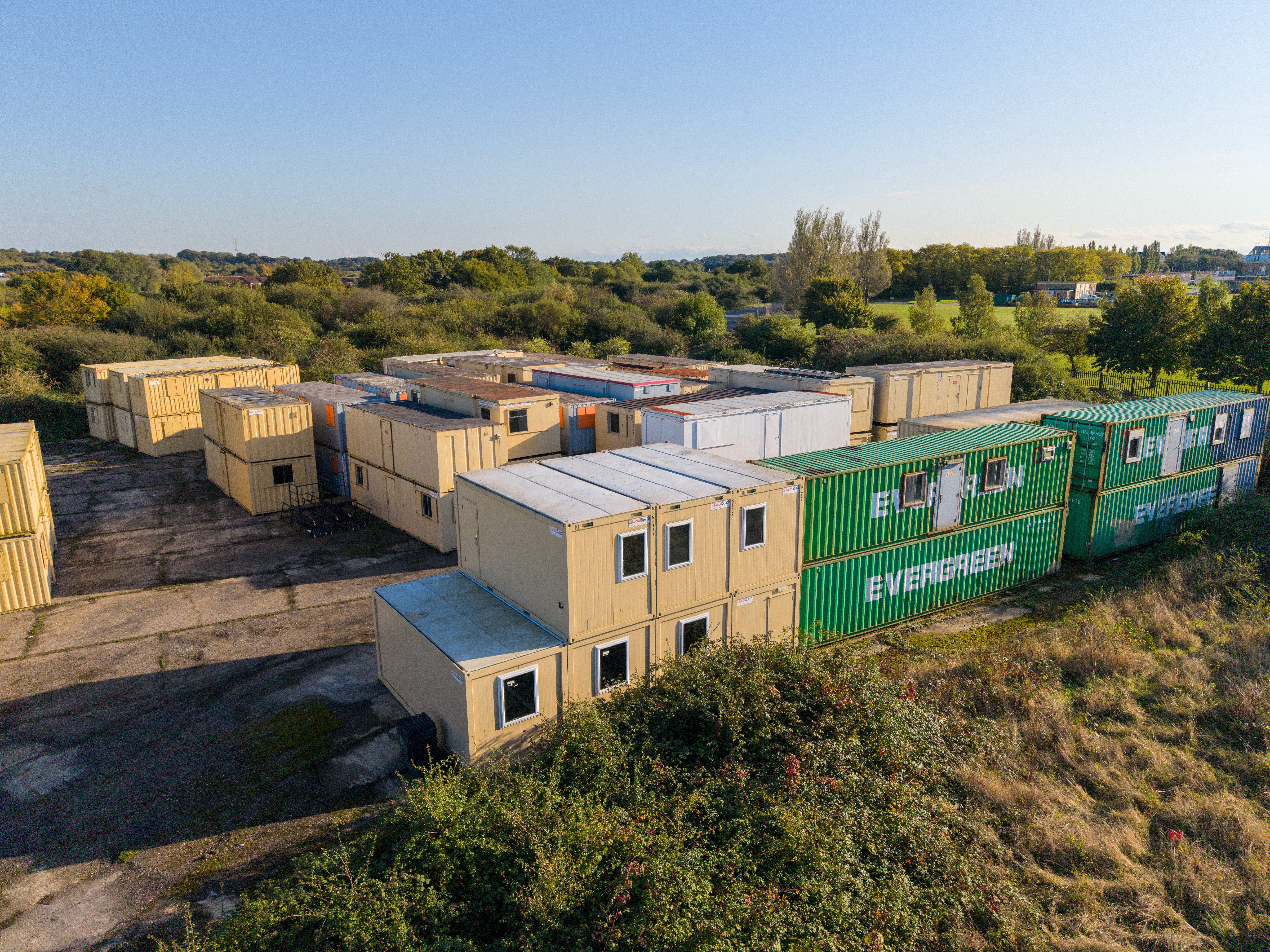
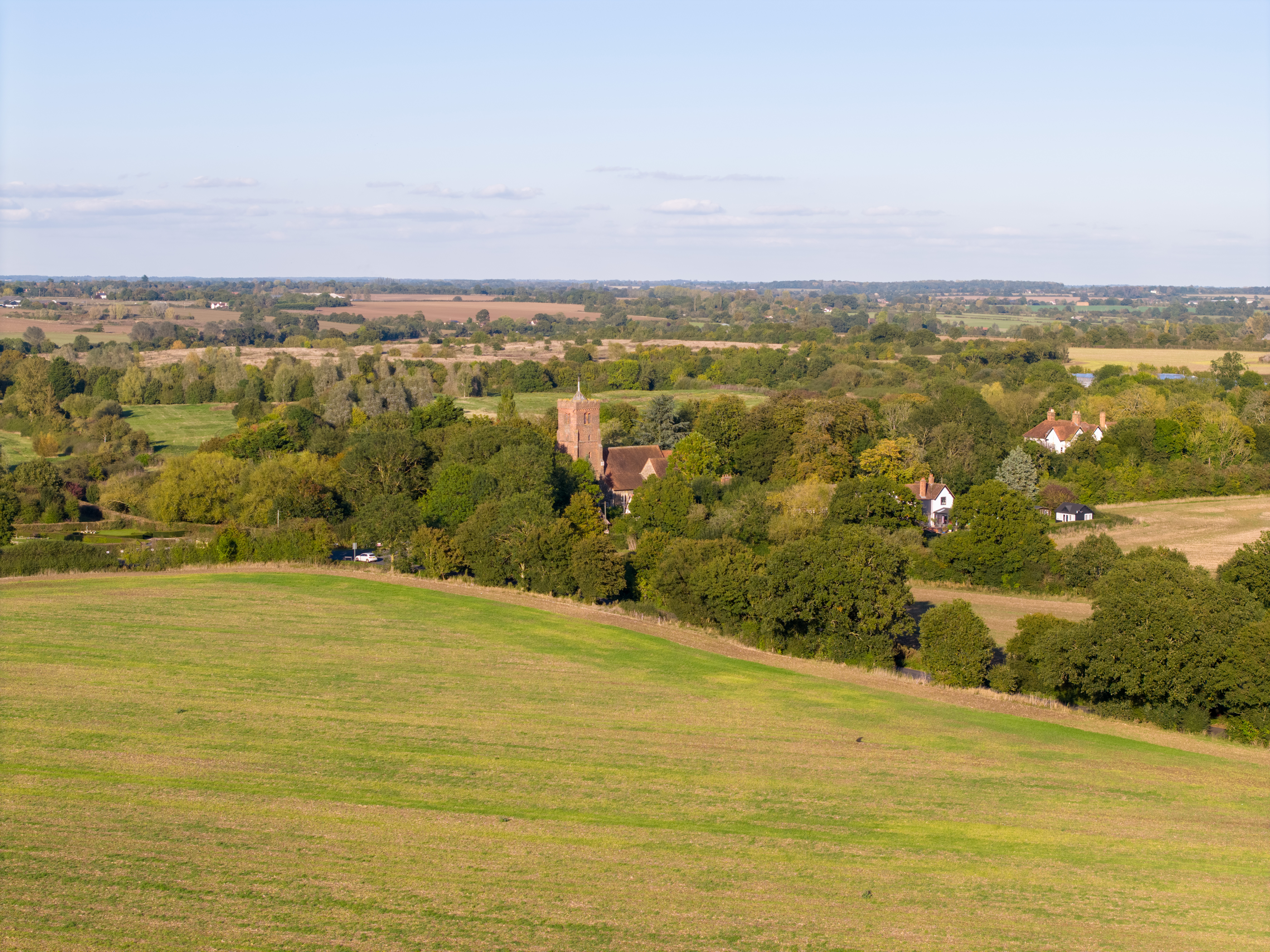
Taking a couple of the 71.7MB RAW shots from the main camera and putting them into Adobe Photoshop Raw and simply choosing 'auto' added more color and contrast compared to DJI's JPEGs which seem to be a little more naturalistic and, even with the ND filter, a little 'bluer' than Adobe favours by default.

The panorama tool has been improved to require you to simply take the 'top left' and 'bottom right' corners of the image while hovering, and let the drone do the rest; it's great. The on-screen Panavision style visual lets you visualise progress in a more reassuring way than before, and – combined with this drone's very long battery life – it's easier to get the panorama you actually want than ever before.
DJI Air 3S: Sample Video
Theses clips are caught with a mix of ND filters; the sun is generally behind the airfield from where I am, while the church you see is bathed in the sunlight.
The video I've seen is impressive in almost every state, though it's fair to say that – once you reach 9x (so 3x zoom on the 70mm EFL sensor) you're pushing what looks good and the digital zoom blurring is too obvious to use in high-end creative output.
Most of my test footage was shot at 4K 60fps because the system doesn't mind at all, and there wasn't a hint of struggle. Note, too, how even the extended digital zoom doesn't seem to distract from following a subject (storytelling shots, if you like) which I used to follow planes. It has to be said, DJI's subject tracking doesn't seem to have a planes & helicopters feature – not a priority I imagine, but how many people would be shooting this near a runway with permission?
DJI Air 3S: Verdict
If I had to sum up the system – and, to be fair that's my job here – it's a drone which encompasses maturity and professionalism. The image quality – in stills and video mode – bring the kind of quality that a (very) serious enthusiast or a professional would be happy with.
DJI have clearly made what I'd view as a wise choice to steer into that seriousness, and you see that in things like the pixel-binning zoom options; the 'wide' sensor offers 1x and 2x with simple taps, before 3x (the optical of the tele camera), 6x and 9x. These are fixed jumps – it doesn't pinch-zoom like a cell phone. That feels like a choice, and some might not love it, but for me it's a good choice.
Whether I'd rush to upgrade from an Air 3 is a different question. If I did a lot of panorama work, then yes; I'm pretty sure the new software would save me time very soon. That, though, is a niche. If I felt the Lidar would help me out, sure, but I prefer to avoid things by eye.
DJI said in the release that the camera produces more "breathtaking details" than the Mavic 3 Pro and while I'm not sure that's the case (or exactly what that means), in value terms this drone can be flown for about half the outlay so there's absolutely something in that!
✅ Buy it...
- You're looking for a drone that offers real professional quality and flexibility in style.
- You understand the advantage different lenses can offer.
🚫 Don't buy it...
- You want to stay below the legally easier 250g take-off weight
- You want to capture very long range surveys; 70mm ELF tele is creatively useful but isn't a 'superzoom'.







